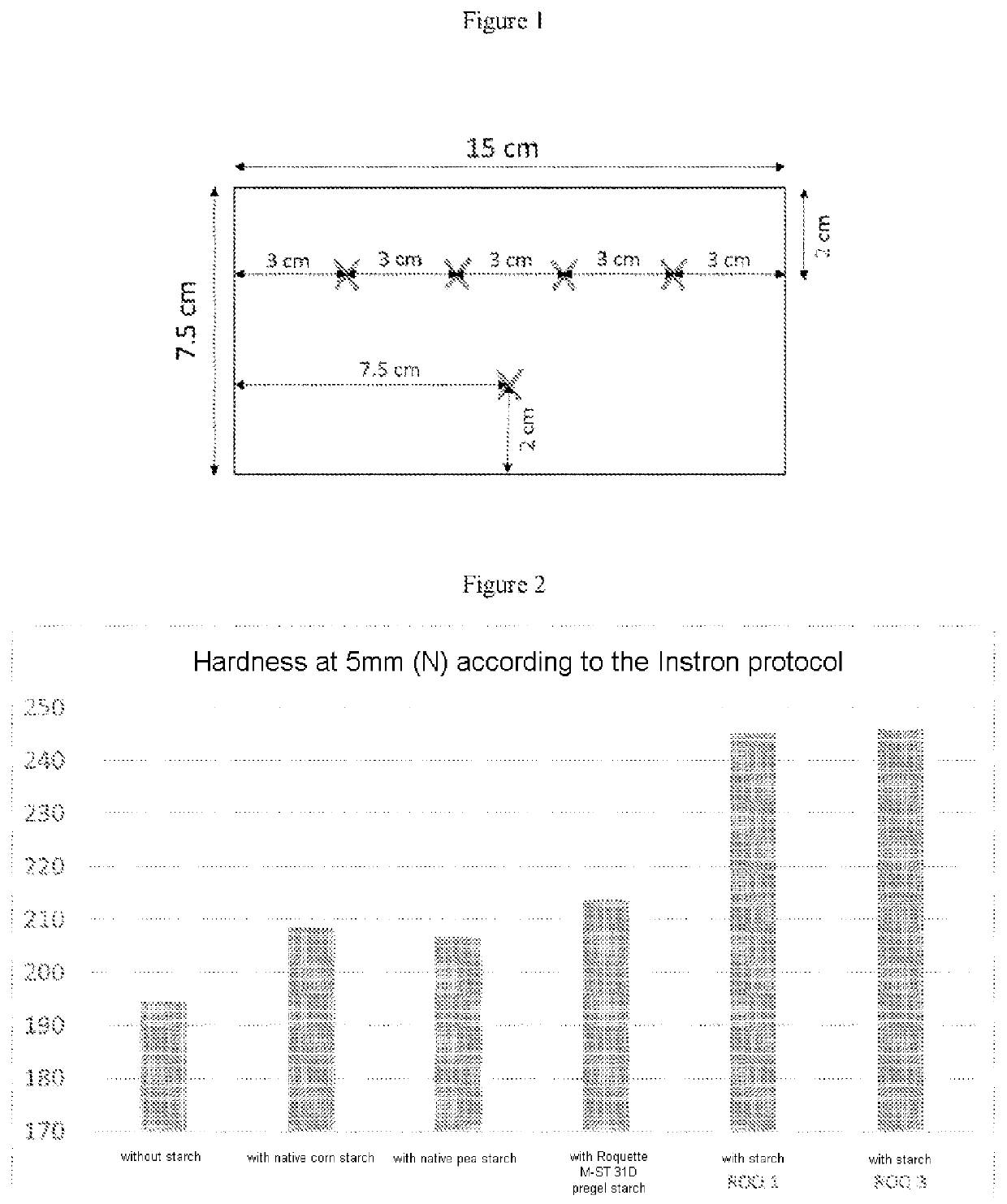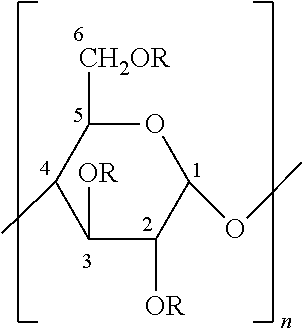Method for modifying polysaccharide material by sequenced homogeneous chemical functionalisation
- Summary
- Abstract
- Description
- Claims
- Application Information
AI Technical Summary
Benefits of technology
Problems solved by technology
Method used
Image
Examples
example 1
on of Starch Modified According to the Process of the Prior Art
[0234]The example that follows describes the process for preparing a modified starch according to the prior art.
[0235]Modification Process:
[0236]This example of implementation of the process according to the prior art is performed in a Druvatherm DVT10 reactor from the manufacturer Lodige Process Technology. It is a jacketed, horizontally positioned cylindrical reactor, the stirring device of which is suitable for fluids with a viscosity which may be up to 1 000 000 mPa·s. The stirring device consists of a main mixer with plowshare paddles arranged along the central horizontal axis, and a secondary mixer with rotating knives arranged close to the inner wall of the reactor. Each mixer can rotate at its own adjustable speed.
[0237]For all the operations performed in this example, the stirring is set at 100 rpm for the main mixer and at 1000 rpm for the secondary mixer.
[0238]The first step is the preparation of a starch milk...
example 2
on of Starches Modified According to the Process of the Invention
[0248]The example that follows describes the process for preparing a modified starch according to the invention.
[0249]Modification Process:
[0250]This example of implementation of the process according to the invention is performed in a Druvatherm DVT10 reactor from the manufacturer Lödige Process Technology, identical to the reactor used for example 1 of the process according to the prior art.
[0251]First, a starch gel is prepared by performing the gelatinization of the native starch under the effect of heat in the presence of sodium hydroxide. To do this, 2500 g of dry potato starch are spread in 5833 g of water at 20° C. with stirring at 100 rpm for the main mixer and at 1000 rpm for the secondary mixer, and the temperature of the reaction medium is then gradually increased to about 80° C. at about 10° C. / hour. During this heating, when the temperature reaches 65° C., the stirring speed of the main mixer is increased ...
example 3
esistance and Setting Time of Adhesive Mortars
[0261]According to the standard NF EN 12004-2: 2017-04, tile adhesives are prepared according to the instructions of paragraph 6, starting with dry mortars of composition chosen by the Applicant to be discriminating between the mortars. These adhesives are used to bond ceramic tiles 10 cm×10 cm in size, in order to compare the sliding resistances thereof, according to the instructions of point 8.2 of said standard.
[0262]Preparation of the Dry Mortar:
[0263]The composition of the dry mortar is 40 parts of CEM I Portland 52.5N CP2 cement supplied by Equiom, 59 parts of sand 0.1-0.4 μm in size supplied by Société Nouvelle du Littoral, 0.50 part of the redispersible powder Vinnapas 5010N supplied by Wacker, 0.50 part of the cellulose ether Walocel MKX 6000 supplied by Dow, and 0.05 part of modified starch, according to the prior art or according to the invention. The masses of products making it possible to prepare 847.9 g of dry mortar satis...
PUM
| Property | Measurement | Unit |
|---|---|---|
| Fraction | aaaaa | aaaaa |
| Fraction | aaaaa | aaaaa |
| Fraction | aaaaa | aaaaa |
Abstract
Description
Claims
Application Information
 Login to View More
Login to View More - R&D
- Intellectual Property
- Life Sciences
- Materials
- Tech Scout
- Unparalleled Data Quality
- Higher Quality Content
- 60% Fewer Hallucinations
Browse by: Latest US Patents, China's latest patents, Technical Efficacy Thesaurus, Application Domain, Technology Topic, Popular Technical Reports.
© 2025 PatSnap. All rights reserved.Legal|Privacy policy|Modern Slavery Act Transparency Statement|Sitemap|About US| Contact US: help@patsnap.com


